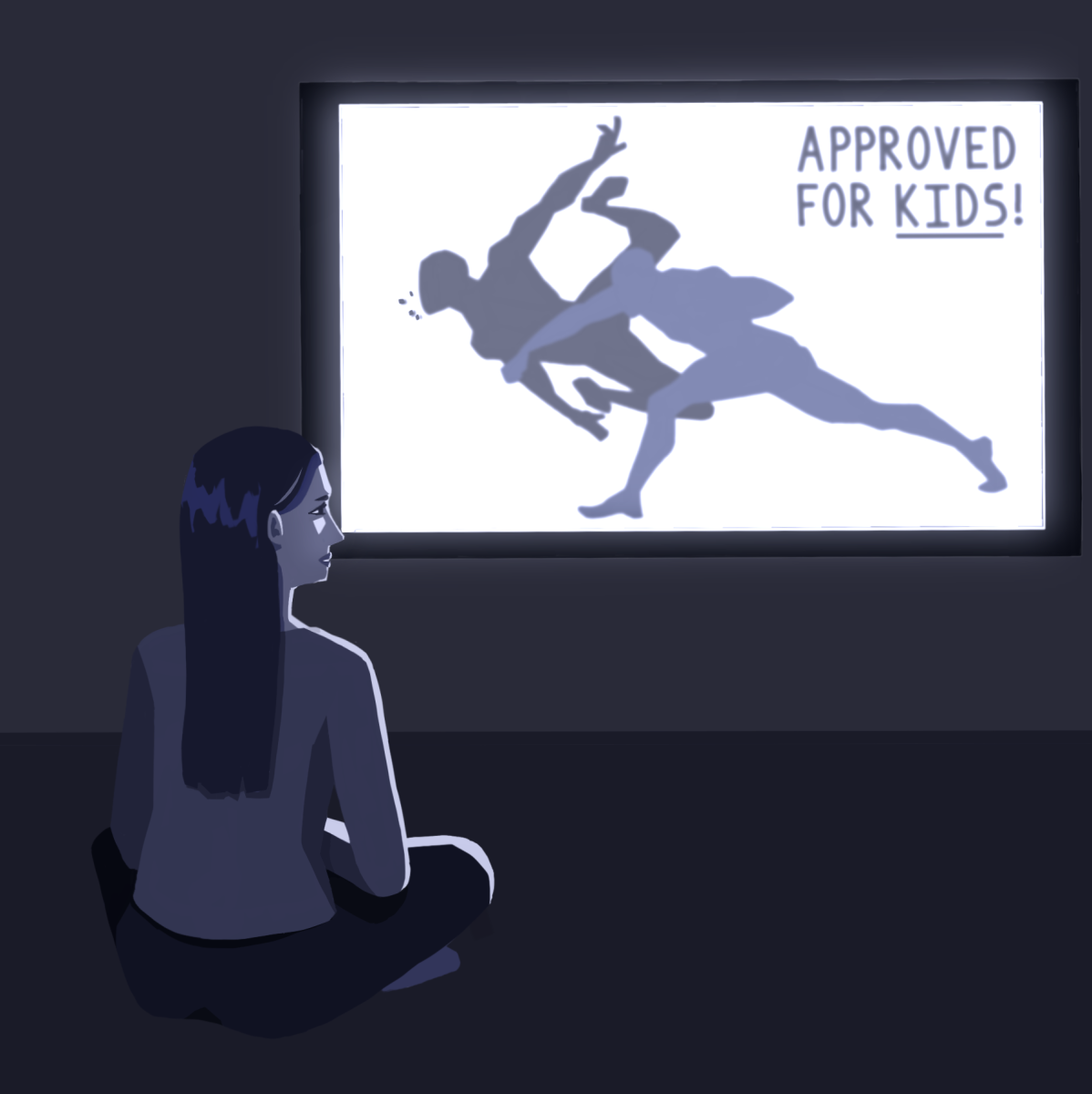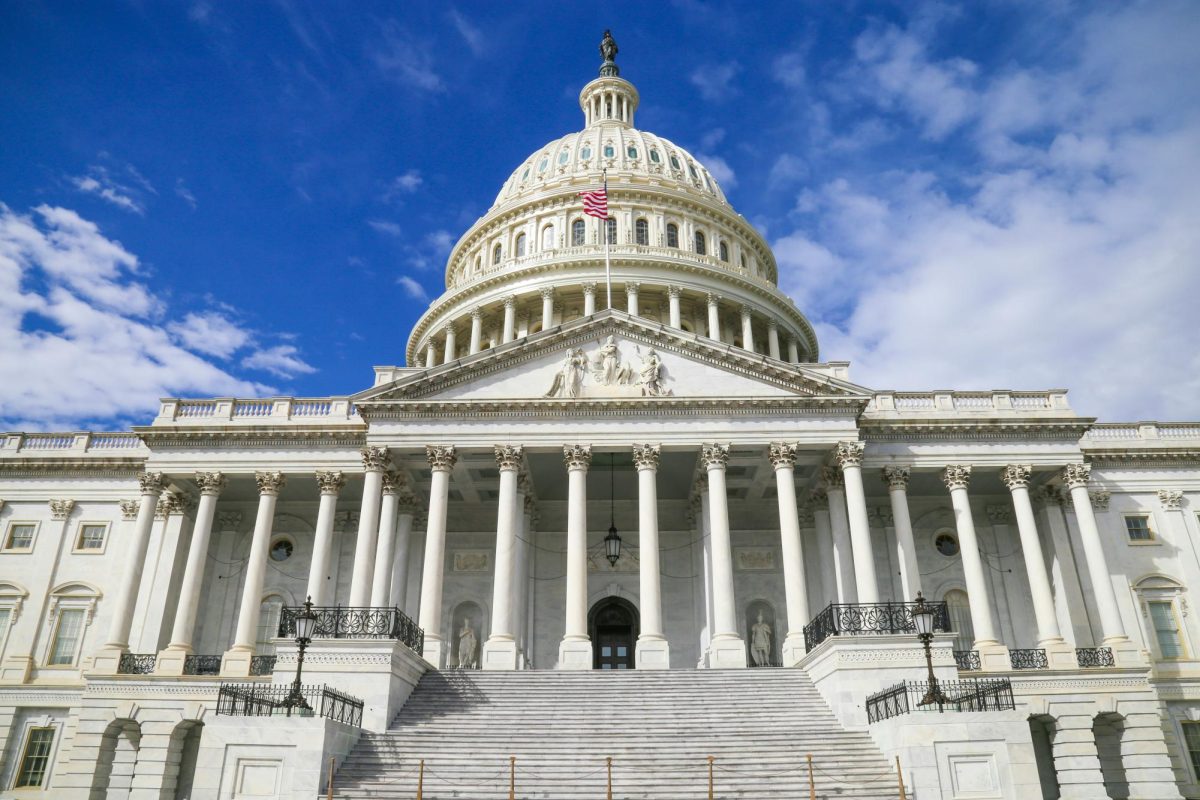It’s the opening weekend of “Deadpool & Wolverine.” Teens across the country flock to theaters to see the newest addition to the Marvel Cinematic Universe. But when they arrive, a theater clerk blocks them from getting in. The movie is rated “R”.
Most people are familiar with movie ratings in the U.S. — “G”, “PG”, “PG-13” and “R”. The Motion Picture Association of America, which was later changed to the Motion Picture Association (MPA), established this system in 1968 as a way for parents to identify which movies were suitable for their children to view. Since the system’s inception, most movies have been submitted for a rating from the MPA.
The MPA does not list the explicit criteria for determining the rating of each movie. However, the association does have two categories of offensive on-screen actions: violence — including anything from guns to punches — and other mature content, including sexual actions, drugs, alcohol and cursing.
Movies that have their fair share of violence can be rated “PG-13” or even “PG”, while films with any hint of mature content, such as movies that use the f-word more than once or have a sex scene, are almost always given an “R” rating. The MPA should adjust the movie rating system to create a fairer, more realistic viewing experience for all filmgoers.
The origins of this system date back to the 1934 Motion Picture Production Code —also known as the Hays Code — which outlined a list of content prohibited in movies, including bans on depictions of “immoral” acts like homosexuality or miscegenation, as well as “pointed profanity” such as “God, Lord, Jesus, Christ […] Hell, S.O.B., damn, Gawd, and every other profane and vulgar expression however it may be spelled.” The MPAA replaced the Hays Code in 1968 with the modern code to change with evolving cultural norms while stopping the censorship of directors. Since that change 56 years ago, the MPA has not adjusted its system. It’s time for it to evolve again.
Consider two award-winning movies from the past decades: “The Dark Knight” and “Ladybird”. “The Dark Knight” — a Christopher Nolan movie that amassed a billion dollars at the box office — featured nearly 50 on-screen deaths. While the movie does not depict blood or any other graphic effects of violence, it shows the deaths of many side characters. Despite the magnitude of violence, the film received a “PG-13” rating. In comparison, “Ladybird,” — a critically acclaimed coming-of-age story directed by Greta Gerwig — features one modest sex scene, characters making out and mildly vulgar language. It received an “R” rating.
The message from the MPA is clear: A violent movie is okay for teens, but a movie with sex is a hard no. Parents may support this message, but it makes little sense from a practical standpoint. The belief that sex should be censored while violence is encouraged in the media actively hurts America’s teens by ignoring real-life themes in favor of hyper-violent and harmful material.
Junior Caroline McCann said that movies should not be penalized for portraying reality.
“You get an ‘R’ rating for showing alcohol … or long kissing or two F-bombs,” McCann said. “Life is literally R-rated.”
Studies show that more than half of teenagers will engage in sexual intercourse before they turn 18, and almost all curse from time to time. However, very few teenagers have committed the murders featured proudly in many “PG-13” movies. There is significant incongruence between the lived experiences of teenagers and the fabricated ones shown to audiences in media, a discrepancy actively pushed by the MPA’s current movie rating system.
Critics and audiences alike praised the 2018 movie, “Eighth Grade” for its realistic portrayal of the middle school experience of its protagonist. Much to the director’s horror, the MPA gave the film an “R” rating, banning actual eighth graders from seeing it. The movie doesn’t contain any overt depictions of sex, but the MPA issued the rating because of the use of the f-word several times and the presence of mild sexually related content, regular aspects of the average middle and high school student’s life.
At their core, movies are meant to reflect the human experience on screen. This idea fueled the drive to increase on-screen diversity and the number of women in the director’s chair. The MPA must place the same emphasis on reflecting real life when it comes to teenage experiences.
At the very same time that the MPA discourages real-life storytelling, it pushes violence, desensitizing younger viewers. The 2023 animated movie “Spider-Man Across the Spider-Verse” shows many animated, yet violent, fight scenes. Given the animation and cartoonish feel of the scenes, the movie was rated “PG.”
Movies like “Spider-Verse” could cause young people to expect fewer consequences for violent behavior. “The Dark Knight” also shows characters getting shot or violently thrown against walls but omits the blood to lower the movie’s rating. By changing the visuals of violence, directors can make their films more palatable to movie raters at the cost of sanitizing violence in the eyes of their audiences while also divorcing violence on screen from the real-life harm of violence. When the MPA gives the go-ahead, it continues a cycle that makes violence acceptable in films and seemingly less extreme in real life. Violence on screen has tangible consequences for impressionable children — studies show that consistently seeing violence on screen can lead to lower empathy levels and increased aggressive thoughts and actions.
While lowering the ratings of violent movies, the MPA also labels movies with sexually related content higher, which creates many issues.
Comprehensive sex education demonstrates many benefits, notably lowering instances of unsafe sex. Despite this, only half of teens in the U.S. have received comprehensive sex education. As a result, examples of safe sex in movies can go a long way to serve as a good example for teens.
Senior Naomi Goldstein said teenagers are going to have sex either way, but examples of healthy sex in the media can make a huge difference.
“It’s important to destigmatize sex and show kids how healthy relationships work,” Goldstein said.
The sex scene in the R-rated movie “Ladybird” is an excellent example of safe sex as it contains consent and the implied use of a condom.
While big-screen examples of safe sex portray a healthy part of life and growing up, repeated depictions of unsafe sex can lead to teenagers practicing unhealthy habits that can lead to STIs, unwanted pregnancies or sexual assault. As it stands, the MPA does not distinguish between the two portrayals of sex. The MPA must add a distinction to the rating system to accurately reflect film risk levels and the messages displayed to audiences. When they do, filmmakers will have the freedom to put healthy examples of sex into movies without fear of losing an audience, which could lead to greater exposure to healthy sexual practices among movie viewers.
To ensure movies are age-appropriate for viewers, while not being overly restrictive, the MPA should raise the ratings of violent movies, no matter how graphic, and lower the ratings of movies with cursing and representations of safe sex. With those changes, the MPA can start to make movies that more closely reflect viewers’ real-life experiences while limiting young audiences’ exposure to violent and overly mature content. Movie ratings should be an accurate shorthand for understanding the content in movies, and with these improvements, the MPA can strengthen the relationship American teenagers have with the messages shown to them on the big screen.

















